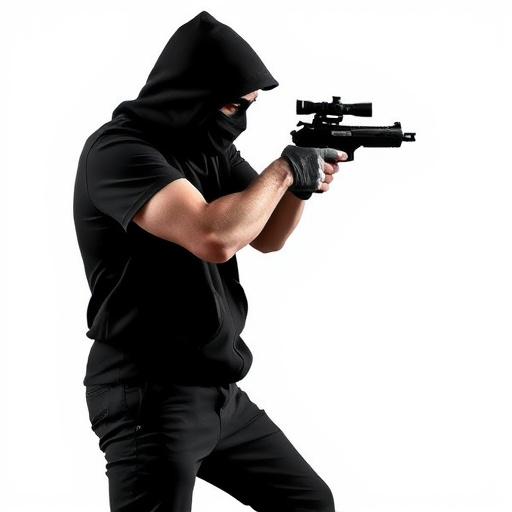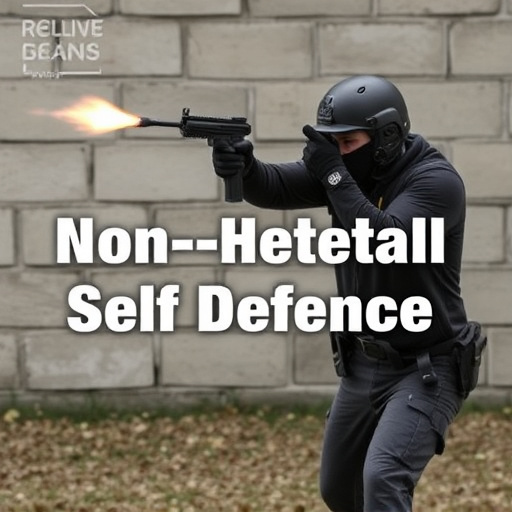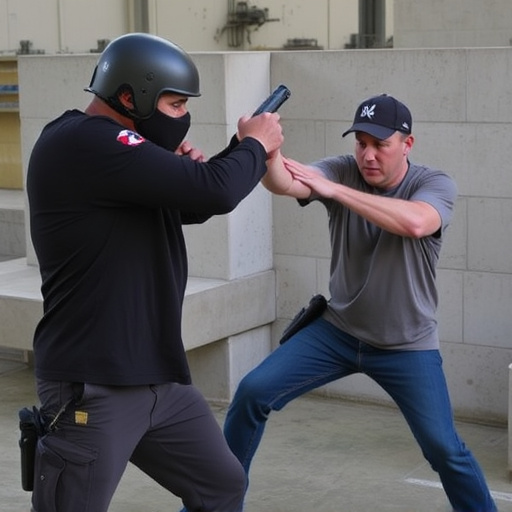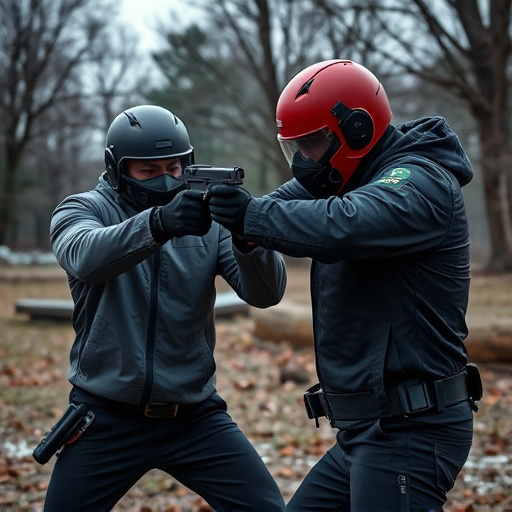This text compares Tasers and stun guns, highlighting their distinct mechanisms and real-world applications. While Tasers temporarily disable through muscle shock, stun guns deliver powerful electric shocks causing intense pain and unconsciousness. Stun guns are often more concealable, with innovative designs mimicking everyday items like flashlights or fashion accessories. The most concealable stun gun design is a subject of regulatory debate, balancing personal protection with potential misuse concerns. When choosing between them, consider specific needs: stun guns for discreet personal defense and Tasers for law enforcement and military use with enhanced safety features.
In today’s world, personal safety is paramount. Tasers and stun guns offer individuals powerful self-defense tools, but understanding their nuances is crucial. This article delves into the differences between these devices, from their operation and effectiveness to legal considerations and real-world applications. We explore the latest concealable stun gun designs, highlighting safety features and user experiences. By the end, readers will know when to choose each device, ensuring they’re prepared for unexpected situations.
- Understanding Tasers and Stun Guns: A Brief Overview
- Key Differences in Operation and Effectiveness
- Legal Considerations and Regulations for Stun Devices
- Exploring the Most Concealable Stun Gun Designs
- Safety Features and User Experience Comparisons
- Real-World Applications: When to Choose Each Device
Understanding Tasers and Stun Guns: A Brief Overview

Tasers and stun guns are non-lethal weapons designed to temporarily incapacitate a person through electric shock, but they operate on different principles. Tasers, formally known as Conductivity Energy Devices (CEDs), fire two small probes connected to wires that deliver a stream of electrical current to the target’s muscles, causing them to contract involuntarily and leading to loss of balance or movement. This makes tasers highly effective for crowd control and self-defense in close quarters.
Stun guns, on the other hand, emit a high-voltage, low-current electric discharge that overrides the body’s natural electrical signals, resulting in muscle paralysis and disorientation. While both weapons are intended for non-lethal force, stun guns often have a longer range and can be more concealable, with some designs offering features like compact size and tactical grip, making them popular choices for personal protection. In terms of concealability, the most advanced stun gun designs prioritize discretion, allowing users to carry them easily while maintaining maximum effectiveness.
Key Differences in Operation and Effectiveness

The operation of a Taser and a stun gun differs significantly, impacting their effectiveness in various scenarios. A Taser fires small probes connected to wires, delivering an electrical current that disrupts muscle control, temporarily incapacitating the target. This method is often considered safer as it requires physical contact and has a limited range, making it less likely to cause harm to bystanders. In contrast, stun guns emit a powerful electric discharge that causes intense pain and muscular spasms, rendering the subject unconscious for several minutes. Stun guns are typically more accessible and offer a quicker response time, but their effectiveness can be reduced if not used properly or in certain physical conditions.
When it comes to concealability, stun guns often edge out Tasers in terms of design. Modern stun guns mimic everyday objects like flashlights or pens, allowing for easy hidden carry. This distinctive feature makes the stun gun a popular choice for personal protection, especially for those seeking a most concealable stun gun design that offers a discreet yet powerful self-defense option.
Legal Considerations and Regulations for Stun Devices

Stun devices, including Tasers and stun guns, are subject to strict legal considerations and regulations due to their potential impact on public safety. The legality of carrying and using these devices varies significantly across different jurisdictions worldwide. One key factor in this debate is the design of the most concealable stun gun, which has sparked both interest and concern among law enforcement agencies and policymakers.
In many countries, stun guns are classified as weapons and their possession requires a permit or license. Some regions have specific restrictions on the power output, weight, and size of stun devices to ensure they do not cause excessive harm. The most concealable stun gun designs often face additional scrutiny, as they can be easily hidden, raising fears about their potential misuse. Regulations aim to balance personal protection with public safety by ensuring that citizens have access to non-lethal self-defense tools while mitigating risks associated with poorly regulated or unauthorized devices.
Exploring the Most Concealable Stun Gun Designs

When considering self-defense options, the choice between a taser and a stun gun often comes down to personal preference and specific needs. However, for those seeking the most concealable option, stun guns typically offer a more discreet profile. The market has seen a rise in innovative designs that make these devices nearly indistinguishable from everyday items. From flashlights to fashion accessories, some stun guns are meticulously engineered to blend seamlessly with their surroundings, making them ideal for concealed carry.
These most concealable stun gun designs prioritize both functionality and aesthetics. They often feature slim, compact bodies that fit easily in pockets or purses without drawing unwanted attention. Some models even incorporate LED lights or unique texturing to mimic everyday objects, ensuring users can keep their self-defense tool hidden while maintaining a sense of style.
Safety Features and User Experience Comparisons

When comparing a Taser and a stun gun, one key aspect to consider is their safety features and user experience. Stun guns, designed for personal protection, often prioritize ease of use and concealability. The most concealable stun gun designs can fit comfortably in a pocket or purse, making them easily accessible when needed. These devices typically feature simple activation mechanisms, such as a single button or twist-and-shoot functionality, ensuring users can respond quickly in potentially dangerous situations.
In contrast, Tasers are law enforcement and military-grade tools known for their powerful electric shock delivery. While they offer superior stopping power, Tasers often have more complex safety features compared to stun guns. This includes safety switches, lock mechanisms, and training requirements to ensure safe and responsible use. The user experience with a Taser may be different, as it often involves learning proper technique and understanding the device’s activation range and cycle.
Real-World Applications: When to Choose Each Device

In real-world scenarios, the choice between a Taser and a stun gun often depends on the specific needs and preferences of the user. Both devices serve as non-lethal force options for self-defense and law enforcement applications, but they operate with distinct mechanisms. A Taser uses electrical current to disrupt muscle control, causing the target to fall to the ground momentarily. This makes it ideal for de-escalating situations involving aggressive individuals, as it allows officers to subdue a subject without causing serious injury.
On the other hand, stun guns employ high-voltage electrical pulses to override the body’s natural nervous system, resulting in intense pain and temporary paralysis. They are particularly useful in close-quarters encounters where speed and immediate incapacitation are crucial. For individuals seeking maximum concealability, modern stun gun designs offer compact, sleek models that can fit discreetly in pockets or purses, making them a preferred choice for personal protection.
In conclusion, while Tasers and stun guns both serve as personal defense tools, they differ significantly in operation, effectiveness, legal status, and real-world applications. Tasers use electrical muscle stimulation to incapacitate targets, making them ideal for law enforcement scenarios. Stun guns, on the other hand, rely on high-voltage, low-current electric discharge, offering a quicker trigger response but with reduced range and power. When considering self-defense options, understanding these differences is crucial, especially in terms of choosing the most concealable stun gun design that fits your needs and complies with local regulations.
